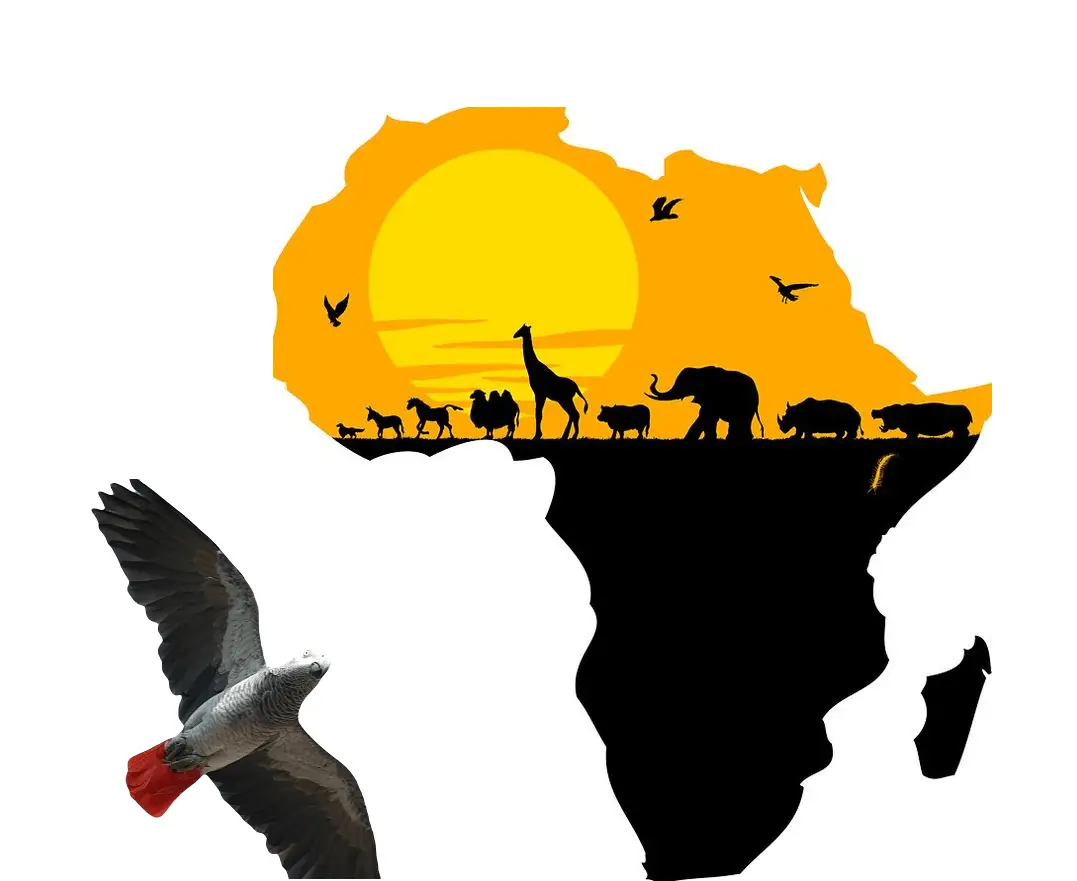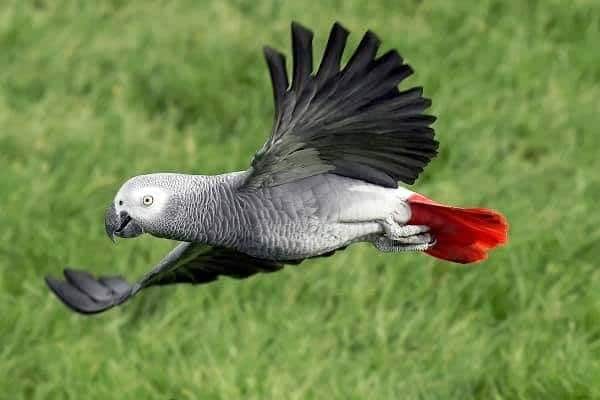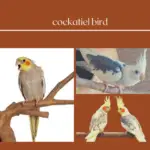
- Where do parrots live in the wild?
- Are there parrots in the wild?
- Are there wild parrots in Africa?
- Can a parrot survive in the wild?
- Wild parrot lifespan?
- African grey parrots in Entebbe
- Red-faced lovebirds in Entebbe
- African grey parrots on Bugala Island
- African grey parrots in Kibale National Park
- Single African grey parrot at Chimpanzee Forest Guesthouse
- Single Meyer’s parrot at Bigodi Wetland Sanctuary
- Meyer’s parrots at Ziwa Rhino Sanctuary
Parrot Africa: Very popular as a pet worldwide, the life of African grey parrots have long been linked to that of humans. However, parrots are now facing a population collapse due to their capture for the pet trade and the loss of their natural habitat. Fortunately, new research has highlighted opportunities to strengthen conservation efforts for these iconic birds and their forest habitat.
The grey parrots of Africa are instantly recognizable. Their grey plumage, subtly scalloped, is electrified by a striking crimson tail and their hooked beak, whose shape allows the seeds to be effectively broken, is undoubtedly a “parrot”.
Grey parrots are very gregarious and take several years to mature – characteristics that, combined, make them vulnerable to overexploitation.
According to official figures from CITES (Convention on International Trade in Endangered Species of Wild Fauna and Flora), more than 1.2 million live wild grey parrots have been traded internationally over the past four decades.
In 2016, they were classified as “Endangered” on the International Union for Conservation of Nature’s (IUCN) Red List of Threatened Species.
Parrots from Africa
SOURCE:Discover PARROTS
Parrots in africa
“African grey parrots were once widespread in low Guinea forests in West Africa, including many sites in Nigeria, and were of cultural and economic importance to many communities,” says Ifeanyi Ezenwa, field program manager at the World Parrot Trust and a professor at the University of Nigeria in Nsukka.
Today, grey parrot populations are fragmented, but their status in many sites, including several Key Biodiversity Areas (KBA), is poorly known. “The sighting of large groups of perched parrots is unfortunately rare today,” says Ezenwa.
“We knew that trapping has led to a decline, but we didn’t know which sites were the most important, which trade routes were involved or what really motivated trapping for trade,” Ezenwa adds. However, such information is vital to develop locally appropriate actions to safeguard the remaining wild populations.
Since 2018, a project, coordinated by the World Parrot Trust and supported by the Critical Ecosystems Partnership Fund (CEPF) with multiple local partners, has conducted field surveys at more than 20 sites in southern Nigeria.
These sites include several KBAs and recognized national parks, as well as areas outside officially protected areas and some commercial plantations.
Transect surveys to generate direct abundance data were used alongside interviews with local communities to understand perceptions of demographic trends and the socio-economic dimensions of trapping and trade.
This approach has been carefully designed to engage communities in a conversation about the future of grey parrots and establish a network of community champions.
By partnering with the Nigerian Bird Atlas Project and the AP Leventis Ornithological Research Institute, it was also possible to generate additional records to provide a complete picture of the status of the grey parrot throughout the country.
Parrot Africa

Preliminary results of the project paint a mixed picture of the situation of grey parrots. Many communities have reported a significant decline in recent years, as well as continuous trapping activity, often by itinerant hunters, sometimes from neighboring countries.
However, there are several sites where populations appear to be resistant and where trapping is no longer taking place, in some cases as a result of conservation group awareness efforts.
More importantly, multiple opportunities have been identified to help communities protect key resources, including nesting and perching sites.
Another part of the project was to study markets across the country to detect sales sites of live parrots and parrot parts for use for traditional and spiritual purposes.
It was found that trade in these two areas was widespread and that, in many cases, it was not known that this practice was harmful to wild or illegal populations under Nigeria’s national laws.
“This highlights an opportunity to raise awareness among merchants and consumers,” says Ezenwa, who also highlighted this point in an article published in the newspaper Oryx.
In a number of cases, links to international trade have been identified, with parrots often originating in Cameroon and exported to other countries in North Africa and the Middle East.
“We must now build on these findings to develop meaningful actions to safeguard the species in the forests of Lower Guinea,” says Dr. Rowan Martin, Director of the World Parrot Trust’s Africa Conservation Programme.
“It is not only trade that is a threat, but the expansion of agriculture in the last natural bastions of the species. Nigeria has been a leader in the development of vital international protections for grey parrots and is again leading the way with these initiatives,” he added.
In addition, a workshop bringing together the project’s multiple partners and grey parrot conservation stakeholders will be held when travel restrictions related to the COVID-19 pandemic are lifted.




















